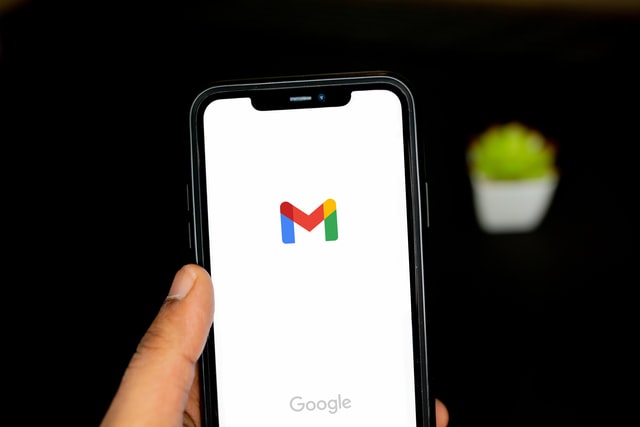How to Write Cold Email Templates That Don’t Suck
You’ve tried to write cold email templates that don’t suck, but you’ve been stuck. Writing effective cold emails can be a challenge, but with some excellent copywriting skills and some personalization they don’t have to feel sleazy to send out.
If you are reading this, then you have probably had to hit that “Send” button while feeling uneasy about emailing someone you don’t know with something you didn’t write (just copied and pasted) about some kind of sales pitch…
…yeah, it can be rough.
Let’s break down a cold email into its core parts, define personalization, and come up with a concrete template for cold emails that don’t suck to send (or receive).
Parts of cold email templates
Most of us don’t need a breakdown of what makes up a cold email, but indulge me for a second…
You’ve got your subject line, yeah? Needs to be relevant, interesting, attractive, etc. We all know that. It doesn’t have to be rocket science. Just don’t make it boring while also making it clear about why you are sending it to begin with.
The preheader text (or whatever name you may call it–I have heard plenty of names for it). This needs to be enticing. This is the only portion of your email you are pretty much guaranteed that they will read. So make it engaging from the beginning.
The body of the email. Obvious. There is so much that could be said here, but let’s just leave it that there are a lot of ways you can format the body of your email. The important thing is that the body is short enough to get your point across and long enough to answer any immediate necessary questions.
The signature of the email…it could be included as part of the body, but I think it deserves its own spot. People who use their signature line well are absolute geniuses. People like Robert Allen who always has some quirky signature is brilliant for relating to people and making emails interesting and engaging.
Now, what did we miss…?
The FROM NAME. In my opinion, this might be the most important part of any email. Imagine you get an email with no subject line that says “From: Will Smith”…you may be skeptical at first, but you are going to recognize that name and be tempted to open it immediately. Now, imagine that same email with “From: Dylan Miller.”
Who even is that, am I right? You aren’t going to open that email!
Your name has a reputation. That reputation (and growing that reputation) will make those emails get opened a lot faster and more often. It’s worth noting, even though it is something mostly out of your control.
Customization vs personalization
Here is where people get everything wrong about cold email templates…
They think if you want to write a good cold email, then you need to make some tweaks to a few of the pieces of a template. Or at least make them editable in some way.
No, friends.
That is called making them customized, not personalized.
If something is personalized then only the person reading it would be able to connect the dots. It is made for them and no one else.
Writing something like, “I love the work you do at ____” isn’t personalization…it is customization.
Saying, “I also agree with the way ____ does their email marketing”…is something anybody at that company could read.
Now…
Including something such as, “I disagreed with your recently LinkedIn post about ____, but you made some good points on why ____ is the better option. You may have even convinced me that I am wrong!”
THAT
…is something someone will notice, they’ll dig back to see what post you are talking about, they’ll look for your response, comment, or reaction to the post…they will engage with you.
How much personalization do you need?
I knew this question would come up…
I like to say that every email should be personalized. However, if you are doing an email sequence that is 6+ emails deep, then maybe that shouldn’t be true.
So, I’ll leave it at this: only personalizing the first of the series in your cold email templates isn’t enough–the first 3-5 touches should be personalized.
They may not read your first email or your second one…but your third, fourth, or fifth…if they are going to read any of them it will probably be one of those. Otherwise, they probably aren’t ever getting back to you anyway…
How to write cold email templates that don’t suck…quickly!
Here is the part you have been patiently waiting for!
Let’s bring it all together.
Your From Name is going to carry the most weight. Before you send an email, you need to engage with them somewhere. It doesn’t need to be a lot. Just enough to make them do a double take when your email comes across their inbox.
The more you interact, the more likely they will be to open that email when they recognize the name.
Your subject line and preheader text will probably get written when you have finished your email template. There is no great way to template these until you have tried a few of them on for size.
Try some A/B testing with something funny, something serious…or something click-baity, something boring (you would be surprised how often “Updates from ___” get higher open rates when used infrequently enough. Keep testing until you have found one that fits your brand voice and intention well while still getting consistent open rates.
The body of your email…
…this is the part where I could write 3-5 more pages of content and still not scratch the surface.
So, let me give my two cents on what works best, in my opinion.
Open your first paragraph with an honest line about why you are contacting them. This is where personalization can be used immediately and effectively. They don’t need to know what you are contacting them about right away. Just make the connection quickly.
In your cold email templates I would just bracket off a spot for personalization. Here’s what that might look like followed by an actual example:
Hey, Dylan!
[Personalization here and how it ties into what we are asking about] = I loved your blog post about cold email templates that don’t suck. I think you lost me a bit on the template section, but I really loved how you defined customization vs personalization. That’s why I wanted to contact you about email marketing.
Paragraph two should dive into why you are contacting them. This can look very different depending on what you are asking, what industry you are in, and what style of email template you are building out.
You can bring up pain points and ways you solve the problems or just throw out the ask directly.
Keep playing around with what seems to be working the best and include the best of the best lines in your cold email templates.
Paragraph three, if you should have one, needs to be a simple and direct call to action. The simpler, the better. I have even just asked for them to reply with a single word and then I will get the ball rolling on their behalf. No link clicking or anything. I will do the front end work–just to reduce friction for them.
The signature…go ahead and make it as awesome as you want. Don’t make it total fluff. No one notices all your phone numbers and email addresses down there. Make it enjoyable. Throw in a picture of a baby tree kangaroo!
Wash, rinse, personalize, repeat!
Feeling confident enough to send me a cold email?
Go ahead and shoot me your cold email! I’d love to give some feedback on it. My one ask is to include the word “feedback” as the very first line so I don’t accidentally give you feedback when you are actually just pitching me something…
I hope you feel empowered to go write way better (and far less sleazy) cold email templates!
If you like what you see, then you can contact me about setting up some time to chat about how I can help you just a little bit more! Otherwise, I’d love for you to check out the DSM blog and see what other nuggets of wisdom I might have for you.
As always–I appreciate you, friend!



